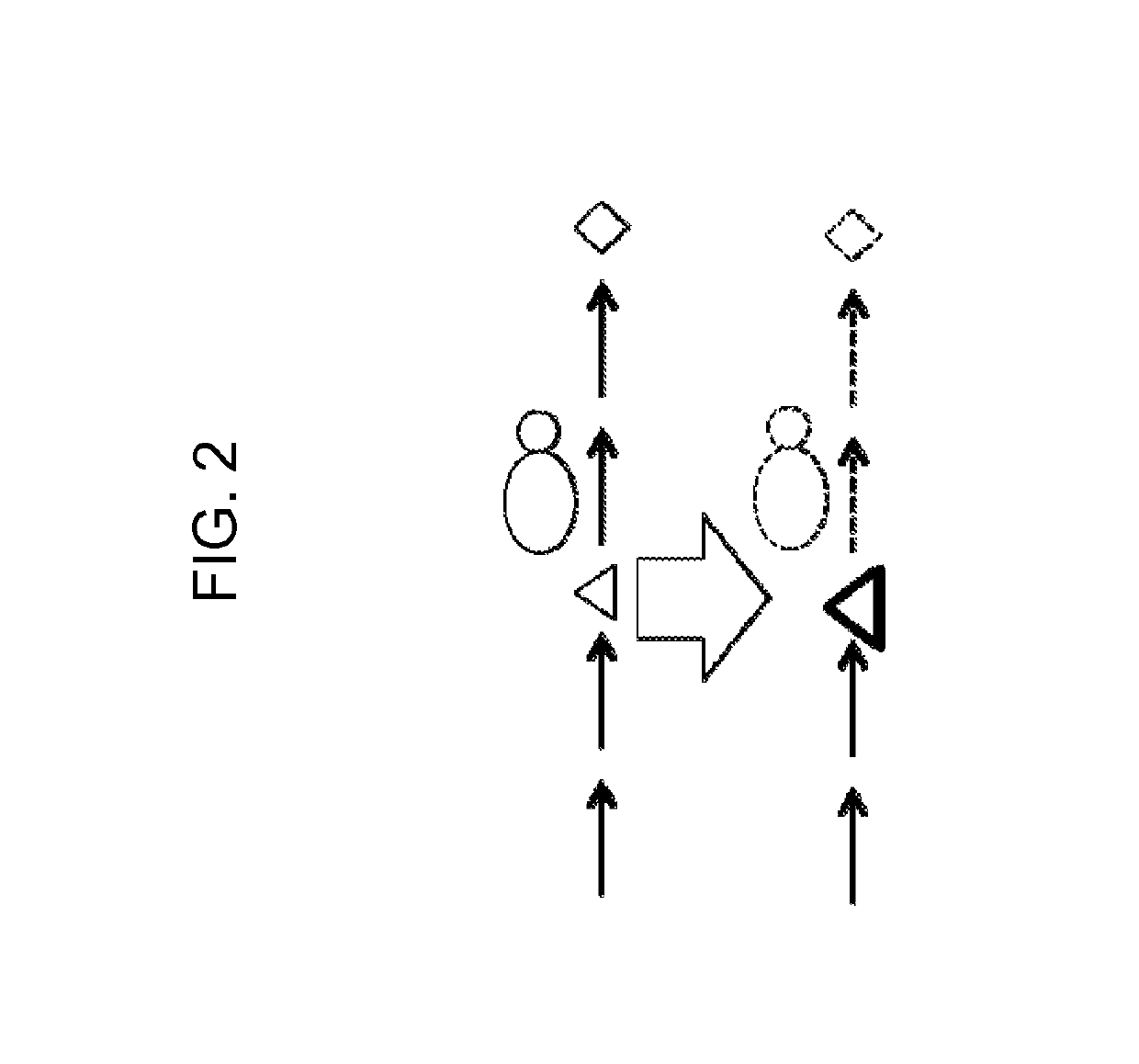Methods and molecules for yield improvement involving metabolic engineering
a metabolic engineering and yield improvement technology, applied in the field of cell metabolism engineering, can solve the problems of the ‘feedstock’ cost, the cost of the feedstock itself, etc., and achieve the effects of promoting degradation of protein, enhancing degradation of protein, and modifying cell metabolism
- Summary
- Abstract
- Description
- Claims
- Application Information
AI Technical Summary
Benefits of technology
Problems solved by technology
Method used
Image
Examples
example 1
of Shikimic Acid from a Microbe Containing an Engineered Shikimate Kinase Gene
[0091]An E. coli strain capable of being grown in the absence of aromatic amino acids and producing shikimic acid was engineered as follows. The strain was engineered to express a shikimate kinase isoform, the product of the aroK gene, from a plasmid, while the chromosomal genes encoding shikimate kinase were non-functional. The plasmid-borne shikimate kinase isoform was engineered to have a degradation tag at its C-terminus. In this case and throughout the invention, it was and is useful to inspect the three-dimensional structure of a protein to verify that a chosen terminus is compatible with addition of a degradation tag. The solved structure of the aroK product, PDB file 1KAG, was inspected and the steric availability of the C-terminus was verified.
[0092]Plasmid vectors were generated which allow for conditional expression of E. coli shikimate kinase I, aroK. Using standard plasmid construction techniq...
example 2
n of Shikimic Acid from a Microbial Strain in Which Shikimate Kinase is Fused to a Degradation Tag and Expressed from an Episome with Conditional Replication
[0102]In an alternative method of the invention, an E. coli strain that could be grown in the absence of aromatic amino acids and produce shikimic acid was engineered as follows. Four variants were constructed from a plasmid derivative of the low-copy vector pSC101, in which the origin of the plasmid was temperature-sensitive for replication. The plasmid encoded the E. coli aroK gene expressed from its endogenous promoter. The four plasmid variant coding sequences for the degradation tags AANDENYALAA (SEQ ID NO: 1), AANDENYALVA (SEQ ID NO: 8), AANDENYADAS (SEQ ID NO: 2) and the non-degrading control variant AANDENYALDD (SEQ ID NO: 13) were fused to the 3′ end of the aroK coding sequence. These vectors also encoded a chloramphenicol-resistance marker. Expression of shikimate kinase from the E. coli chromosome was defective.
[0103]...
PUM
| Property | Measurement | Unit |
|---|---|---|
| temperature | aaaaa | aaaaa |
| temperature | aaaaa | aaaaa |
| temperature | aaaaa | aaaaa |
Abstract
Description
Claims
Application Information
 Login to View More
Login to View More - R&D
- Intellectual Property
- Life Sciences
- Materials
- Tech Scout
- Unparalleled Data Quality
- Higher Quality Content
- 60% Fewer Hallucinations
Browse by: Latest US Patents, China's latest patents, Technical Efficacy Thesaurus, Application Domain, Technology Topic, Popular Technical Reports.
© 2025 PatSnap. All rights reserved.Legal|Privacy policy|Modern Slavery Act Transparency Statement|Sitemap|About US| Contact US: help@patsnap.com



